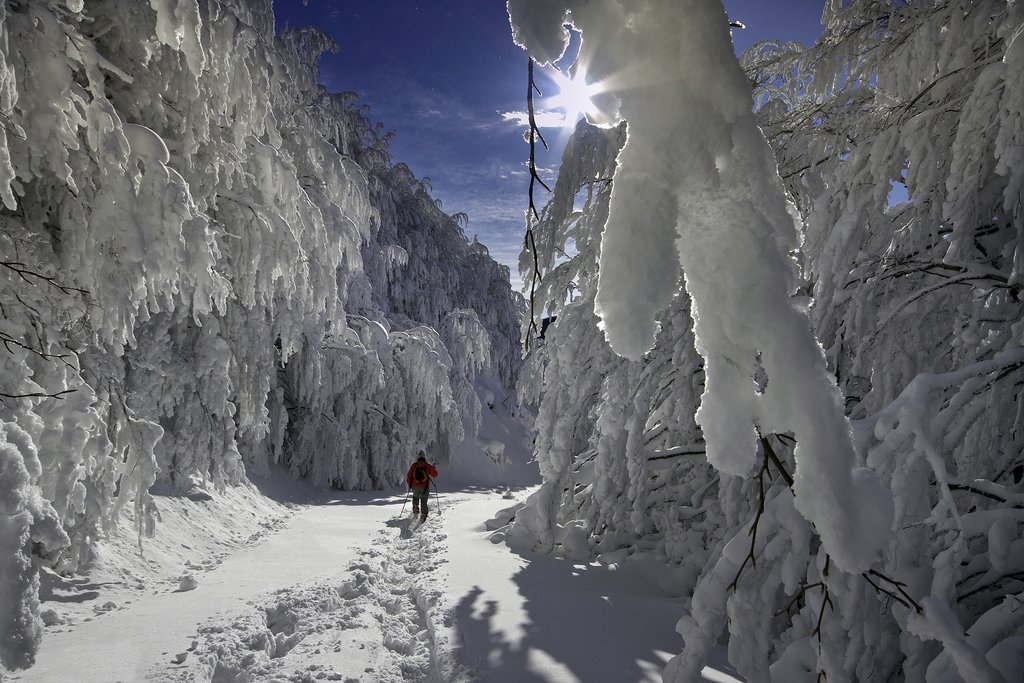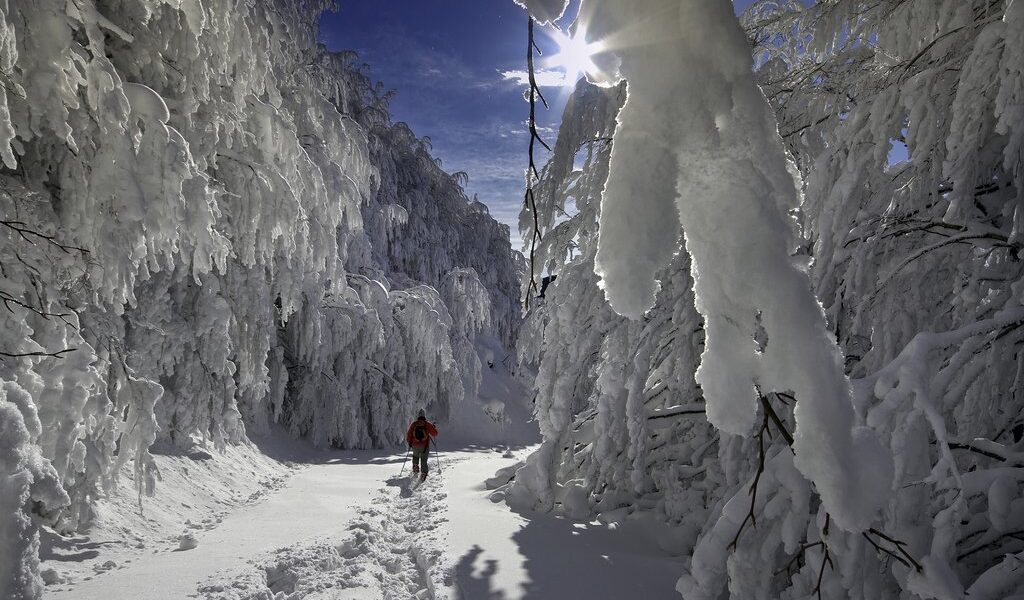
Tuscany’s first month of the year is also its coldest. But with the chilly weather comes fun snow activities, the start of carnivale season, fewer crowds, and lower costs than other times of the year. The snow and ice add an additional enchanting quality to already captivating attractions like Casentino National Park, the Apennines, and the Garfagnana mountains. Find out what to do and where to go with this January guide.
## Tuscany in January: A Comprehensive Guide
January in Tuscany offers a unique travel experience, characterized by cooler temperatures, fewer crowds, and a chance to immerse yourself in the region’s authentic charm. While it might not be the peak season for sunbathing, January provides a different kind of magic, perfect for cultural exploration, winter sports, and enjoying the simple pleasures of Tuscan life.
**Weather: A Tale of Two Climates (and More!)**
Undeniably, January is the coldest month in Tuscany. Average temperatures across this stunning region generally range from a chilly 37-52°F (3-11°C). However, it’s important to remember that Tuscany boasts diverse microclimates, leading to variations in weather depending on where you are. While the region as a whole tends to experience relatively sunny weather, with an average of around eight days of rainfall, the specifics can change dramatically.
Consider the coastal areas and lowland plains. Places like Pisa, Livorno, Cecina, and Grosseto enjoy a Mediterranean climate. This translates to milder temperatures and more frequent rainfall during the winter months. You can expect a gentle, albeit sometimes damp, atmosphere in these beautiful seaside locales.
Florence, however, presents a transitional climate. The winters here are too cold to be categorized as truly Mediterranean. During January, expect daily average temperatures to hover around 43°F (6°C). Nighttime temperatures can frequently dip to freezing, particularly when the strong, northerly Tramontana winds blow through the city. Snowfall is a possibility, though it remains a relatively rare occurrence.
The hilly regions of Tuscany, exemplified by Siena, also experience mild weather, especially when compared to other parts of Europe in January. However, as you ascend to altitudes above 1,000 feet, temperatures will predictably decrease. Be prepared for a noticeably colder experience at higher elevations.
Finally, the Tuscan-Emilian Apennines, which form the eastern border of the region, offer the coldest conditions of all. This mountainous area receives significant snowfall, making it an attractive destination for skiers and snowboarders seeking winter adventure.
**Crowds and Costs: A Budget-Friendly Escape**
The savvy traveler who chooses to visit Tuscany after the flurry of Christmas festivities subsides (specifically after January 6th) is handsomely rewarded. The region offers a sense of peace and tranquility that is often absent during peak tourist seasons. Moreover, you’ll find that hotel rates are significantly more budget-friendly during this time of year.
Along the Tyrrhenian coast, the atmosphere is remarkably quiet. Many hotels reduce their prices, and some even close their doors for the season, as businesses that primarily cater to beachgoers often take a break during the colder months. Ferry services also operate on a reduced schedule, with fewer routes and longer travel times to and from the enchanting island of Elba.
In contrast, ski season is in full swing. Vacationers eager to hit the slopes flock to the mountainous areas. However, unlike some of the more famous Italian ski destinations, Tuscan resorts tend to be less crowded and more affordable, offering a more relaxed and authentic winter sports experience.
It’s worth noting that Florence hosts a number of significant fashion events in January. If you plan to visit the city during this time, it’s highly advisable to book your hotel well in advance. Making restaurant reservations ahead of time is also crucial to avoid being caught out by the influx of fashion-conscious visitors.
Keep in mind that national holidays, such as Epiphany on January 6th, can impact your travel plans. Expect restaurants to be fully booked, and transportation services may operate on a reduced festivi schedule throughout the country. Planning accordingly will ensure a smoother and more enjoyable trip.
**Where to Go: From City Culture to Mountain Slopes**
At the beginning of January, you can still catch the lingering magic of the Christmas season. A fantastic place to start your Tuscan adventure is Florence, the region’s vibrant capital. Here, you can immerse yourself in culture by exploring world-class art galleries and museums, admiring stunning Renaissance architecture, and indulging in top-notch restaurants. Beyond the traditional cultural attractions, Florence offers special Christmas markets and concerts leading up to the Epiphany celebration. For a truly spectacular event, make your way to Palazzo Pitti, Piazza della Signora, or Piazza del Duomo to witness the captivating Procession of the Magi, a colorful parade featuring around 500 costumed participants.
Alternatively, most towns and cities throughout Tuscany and the wider country host their own Christmas markets, bonfires, and *La Befana* and Epiphany celebrations. Consider visiting San Piero a Sieve or Monte Amiata to experience their unique festivities and the warmth of their bonfires, which are lit in celebration of this important holy day.
For skiing and snowboarding enthusiasts, Tuscany offers a surprising range of options. From the popular slopes of Abetone in the Apennine mountains to the southern charm of Monte Amiata, there’s a ski resort to suit every skill level. You can also discover several smaller ski resorts in northern Tuscany, such as Garfagnana and Zum Zeri in Lunigiana. And while they aren’t strictly within Tuscany’s borders, the ski resorts of Monte Cimone and Cerrato Laghi are conveniently located on the Tuscan-Emiliano Apennines border.
**What to Do: Embrace the Tuscan Winter**
Once the Christmas season comes to a close, January transforms into a month of quieter cultural exploration. Renting a car or taking the train allows for optimal sightseeing throughout Tuscany. If the weather turns inclement, you can retreat indoors to discover the countless museums and art galleries that the region has to offer, from Florence and Siena to Grosseto and Pisa. The reduced crowds during this time mean that you can appreciate the various artworks and historical artifacts on a more intimate level. It’s worth remembering that museums in Italy are generally open 363 days a year, providing ample opportunities for cultural enrichment.
While skiing is a dominant activity in January, there are plenty of other exciting winter sports to enjoy when there’s snow on the ground. Consider sledding, snowshoeing, or ice skating for a different perspective on the Tuscan landscape. You can also experience the thrill of snow tubing at Monte Amiata and Doganaccia di Cutigliano, offering fun for the entire family. These smaller resorts provide a more authentic Italian experience, allowing you to share ski lifts with locals, sample lesser-known Tuscan dishes, and explore charming medieval villages after a day on the slopes.
Photographers and nature enthusiasts will be captivated by Casentino National Park in January. The snow and ice transform the landscape, imbuing it with a magical quality. And foodies will find it easier to secure a reservation at Tuscany’s top restaurants in popular cities like Florence, Siena, Lucca, and Pisa, thanks to the reduced tourist crowds.
If you’ve traveled to Tuscany specifically for fashion, Florence is the place to be for the international Pitti Immagine event. And of course, if you enjoy shopping, you can take advantage of Italy’s winter sales season. The January *saldi* mark one such period, so be on the lookout for signs in the windows of stores and boutiques, and don’t hesitate to snag a bargain or two (or three!).
**Events in January: Fashion and Folklore**
* **Pitti Immagine:** This renowned international fashion event takes place annually at the Fortezza da Basso in Florence. Since its inception in 1954, Pitti Immagine has showcased clothing and fabrics across four distinct events: men’s, women’s, and children’s clothing, as well as Pitti Filati, which caters to knitters.
* **Epiphany:** The Italian Christmas season shares many similarities with those of other Western nations, including the celebration of Christmas Eve and Christmas Day. However, one event that sets it apart is *La Festa dell’Epifania*. Held on January 6th, it marks the end of Italy’s “12 days of Christmas.” Children throughout the country eagerly anticipate this day, as it is when an old witch called *La Befana* delivers gifts to their stockings. During the day, children often dress up as Befana and go “trick or treating,” while groups of singers travel from door to door, spreading festive cheer through song.
B-1369

